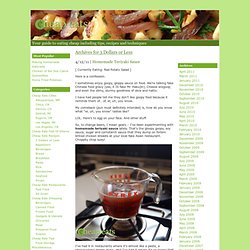

Gomen Wat Recipe. Ethiopian Injera Recipe. Injera is not only a kind of bread—it’s also an eating utensil.

In Ethiopia and Eritrea, this spongy, sour flatbread is used to scoop up meat and vegetable stews. Injera also lines the tray on which the stews are served, soaking up their juices as the meal progresses. When this edible tablecloth is eaten, the meal is officially over. Injera is made with teff, a tiny, round grain that flourishes in the highlands of Ethiopia. While teff is very nutritious, it contains practically no gluten. Ethiopian and Eritrean immigrants have modified their recipes after moving to the United States or Europe, depending on what grains are available to them. Recipe Conversions CAUTION Kids, please don’t try this at home without the help of an adult.
Tip Depending on where you live, teff flour can be difficult to come by. Nutella Shot Recipe. 3 Dollars or Less : Cheap Eats. [ Currently Eating: Dharmalars ] I am an egg paranoiac.

I admit it. Yes, you may have seen one of those obsessive-compulsive, sweatpants-clad egg fondlers at the market just a few weeks ago. That was ME fondling your eggs Mr. Stater Brother. I open up a box of eggs and then set them up on the shelf to check and see if they’ve slipped any fake candy eggs in the box. I smell the eggs for any hints of radioactivity. Then I roll them across the floor to make sure the yolk distribution is correct. The trajectory on the floor must inscribe a certain parabolic arc, and if it does not, then I put them back in their container and start all over again with another box. If they are separated, an immediate high frequency coded signal will begin to be transmitted from a hidden circuitboard embedded at the base of each cardboard box of eggs. They will be instructed to apprehend any bad eggs. The above scenario, while not exactly true, is not exactly false. No, not a tea bagger. Supercook: recipe search by ingredients you have at home.
Find recipes online ? Scanwiches. DIY: Cold Brew Coffee. The Six Tastes of Food: Sweet, Sour, Salty, Bitter, Pungent, Astringent. 1) Include all 6 Tastes in each meal The 6 Tastes offer us a user-friendly guide map for how to nourish ourselves.

Rather than looking at nutritional labels for X amount of protein or Y amount of carbohydrates, the 6 Tastes naturally guide us towards our body’s nutritional needs. Each taste feeds our mind, body, senses, and spirit in its own unique way. From a modern nutritional perspective, the 6 Tastes satisfy each of the major dietary building blocks. Sweet foods, for example, are rich in fats, proteins, carbohydrates, and water, whereas Bitter and Astringent foods are high in vitamins and minerals. The brain sends the body signals when it requires energy in the form of food.
Including the 6 tastes in each meal doesn’t need to be a daunting task. 2) Allow your unique constitution to determine the proportion of tastes you eat The body naturally desires tastes that balance its doshic makeup and shuns tastes of an aggravating nature. Balancing the Doshas Through Taste.